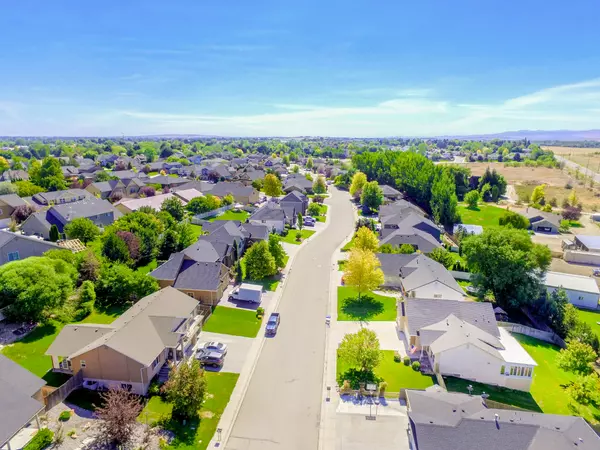How to Price Competitively in a Seller’s Market

How to Price Competitively in a Seller’s Market
Introduction
In a seller’s market, where demand outpaces supply, many homeowners assume that any property will sell quickly at a high price. While this is often true, pricing competitively remains critical to ensuring your home doesn’t just sell but achieves maximum profit margin. A real estate agent with deep market knowledge can help you navigate the delicate balance between pricing your property attractively and leaving room for negotiations. By setting your list price close to the market value, you can appeal to a broader customer base, including buyers who are ready with a down payment or pre-approved loan, while avoiding the pitfalls of overpricing, which can deter even the most motivated buyers. A strategic pricing approach also ensures that your home stands out on platforms like the Multiple Listing Service (MLS), driving more attention to your listing.
This pricing strategy not only positions your home as a must-see real estate opportunity but can also spark multiple offers, creating a competitive environment that often pushes the final sale price higher. Leveraging tools like a comparative market analysis, insights from the National Association of Realtors, and predictive analytics, you can align your price with current market trends, inventory levels, and buyer demand. Pricing competitively also gives you the flexibility to manage negotiations, enabling you to achieve a deal that satisfies both profit goals and buyer expectations. By understanding the economics of supply and demand in your local market, you can ensure your home selling process is not only quick but also profitable, maximizing your return on investment while building confidence in your real estate professional’s expertise.
What is a Seller’s Market?
A seller’s market occurs when:
- Buyer demand exceeds supply, creating competition for available homes.
- Homes typically sell quickly, often above the list price.
- Sellers have more negotiating power, especially when multiple offers are in play.
Idaho has been firmly in a seller’s market in recent years, particularly in highly desirable areas like Boise and Coeur d’Alene, where strong population growth and vibrant local economies have fueled demand for homes. The combination of low inventory and eager buyers has created ideal conditions for homeowners looking to sell, but achieving the best possible outcome requires a well-planned pricing strategy. Setting the right list price is critical to leveraging this market trend, as buyers are well-informed, relying on tools like the Multiple Listing Service (MLS), market analysis, and comparative market data to evaluate market value. A strategic approach ensures your home appeals to a wide range of buyers, including those with pre-approved loans, significant down payments, or even cash offers, positioning it as a must-have in a competitive landscape.
Even in a market that heavily favors sellers, pricing must reflect a thoughtful balance of supply and demand to maximize your profit margin. Overpricing risks alienating buyers who are comparing similar homes in the area, while underpricing could leave money on the table. With expert guidance from a real estate agent, you can analyze Idaho’s real estate trends, including localized data from places like Boise’s fast-paced urban neighborhoods and Coeur d’Alene’s scenic lakefront properties, to set a price that generates multiple offers. Pricing strategically not only drives interest but also creates opportunities for negotiation, ultimately delivering a return on investment that reflects your home’s true value proposition in today’s competitive market.
Why Competitive Pricing Still Matters

Even in a seller’s market, where demand exceeds supply, overpricing your property can significantly hurt your chances of selling quickly and achieving the best possible price. Buyers today are highly informed, using tools like the Multiple Listing Service (MLS), online market analysis, and predictive analytics to determine a home’s market value. When a list price exceeds fair market expectations, it often discourages potential buyers, shrinking your target market and diminishing your chances of receiving competitive offers. This is especially true for buyers relying on loans, who must meet stringent credit score and budget requirements to secure mortgages. Overpricing also risks prolonging the home selling process, which can lead to revenue losses as holding costs like home insurance, taxes, and maintenance expenses add up. Worse, homes that linger on the market for too long often develop a perception problem, leading buyers to question their value proposition and opening the door to lowball offers.
Working with an experienced real estate agent is crucial to avoiding the pitfalls of overpricing. Leveraging their expertise in pricing strategies, competitor analysis, and market trends, they can help you establish a competitive list price that aligns with current supply and demand conditions while maximizing your profit margin. A balanced pricing approach considers your home’s unique features, curb appeal, and recent upgrades while taking into account local real estate market dynamics, such as inventory shortages and buyer motivation. By positioning your property strategically, you’ll not only attract serious buyers—including those with significant down payments or pre-approved financing—but also create opportunities for multiple offers, boosting your return on investment. Pricing accurately from the start ensures that your real estate transaction progresses smoothly, maintains buyer interest, and solidifies your home’s reputation as a top-tier listing in a competitive market.
Buyers are savvy:
they rely on tools like the Multiple Listing Service (MLS), recent sales data, and platforms like Rocket Mortgage to assess market value and compare properties. Armed with insights from real estate agents, pricing strategies, and market trends, they evaluate list prices against local competitor pricing and financial considerations, including down payments, loan options, and potential profit margins, ensuring they avoid overpriced properties in today’s competitive sellers’ market.
Perceptions matter:
homes that remain listed for an extended period can create a sense of reduced value among potential buyers. This often leads to lower offers, as buyers rely on market trends, pricing strategies, and list price comparisons from tools like the Multiple Listing Service (MLS) to assess a property's market value, questioning why it hasn’t sold. Such delays can weaken your negotiation position and impact your overall profit margin, emphasizing the importance of setting a competitive price from the start.
Attracting the right buyers:
it attracts both traditional buyers relying on mortgages with down payments and cash buyers seeking quick transactions. By aligning your list price with the market value and leveraging insights from tools like the Multiple Listing Service (MLS) and competitor pricing analysis, you increase your home’s appeal, creating demand that can lead to multiple offers and ultimately maximize your profit margin.
Strategies to Price Competitively in a Seller’s Market

1. Use Market Data to Set Your Price
Work with a real estate agent to analyze comparable properties in your area. Look at homes with similar:
- Size and layout
- Location and neighborhood
- Condition and upgrades
This analysis, conducted with the help of a knowledgeable real estate agent, ensures your list price aligns with fair market value while capitalizing on the high demand of a seller’s market. By examining competitor pricing, recent sales data, and trends provided by tools like the Multiple Listing Service (MLS), you gain a clear picture of how your property fits into the local market. This comprehensive approach considers essential factors like home inspectionfindings, curb appeal, and unique property features to create a compelling value proposition. With data-driven insights, you can set a price that attracts buyers who are ready to make competitive offers, whether they’re leveraging mortgages, down payments, or exploring refinancing options.
Moreover, this pricing strategy goes beyond intuition, incorporating elements of competitive pricing intelligence and elasticity analysis to ensure your home appeals to a broad target market. Aligning your pricing with real estate trendsnot only increases the likelihood of a quick sale but also helps maintain your profit margin by avoiding the risks of overpricing or underpricing. This approach also builds trust with potential buyers, as they perceive the home as fairly priced and supported by market research. Whether you’re working with a listing agent or navigating for sale by owner, a well-researched pricing strategy enhances your home’s appeal and ensures it stands out in a crowded market, maximizing your return on investment while leveraging the competitive advantages of a seller’s market.
2. Price Slightly Below Market Value
In a seller’s market, strategically pricing your home just below its market value can be a highly effective pricing strategy to generate immediate interest and create a sense of urgency among potential buyers. By setting a list price that appears slightly more attractive than comparable properties, you appeal to a broad target market of buyers, including those using loans or down payments as well as cash buyers seeking a competitive advantage. This approach leverages the principles of penetration pricing to draw attention to your listing, ensuring it stands out on the Multiple Listing Service (MLS) and other platforms. Buyers are motivated to act quickly when they see a property they perceive as a good deal, which increases showings and inquiries, ultimately amplifying the competition.
As multiple buyers compete for your home, the resulting bidding war can drive the final sale price above the original asking price, maximizing your profit margin while minimizing time on the market. This dynamic relies on buyer psychology and the scarcity created by the high demand and low inventory typical of a seller’s market. With guidance from an experienced real estate agent who understands real estate trends, market conditions, and competitor pricing strategies, you can position your home as a must-have, creating excitement that results in stronger offers and better terms. This strategy ensures you capitalize on market momentum, delivering a higher return on investment and reinforcing the value of your real estate transaction.
3. Leverage Your Home’s Unique Features
Highlight recent upgrades, such as:
- Energy-efficient windows
- Smart home technology
- Renovated kitchens or bathrooms
These features can justify a slightly higher price and attract buyers looking for move-in-ready properties. By incorporating these enhancements into your pricing strategy, you can justify a slightly higher list price, effectively positioning your property as a premium option. Buyers looking for homes with these features are often willing to pay more upfront to avoid the hassle and expense of renovations. Highlighting these upgrades in your listing and marketing materials, such as on the Multiple Listing Service (MLS) or during showings, emphasizes the value proposition of your home. With the guidance of a knowledgeable real estate agent, you can effectively market these features to attract competitive offers, increasing your chances of achieving a strong profit margin while ensuring the home appeals to both traditional buyers and those ready to make significant down payments. This approach maximizes your home’s desirability while leveraging its unique selling points to secure the best possible outcome.
4. Appeal to a Wide Range of Buyers
Market your property to different types of buyers, including:
- First-time buyers using financing
- Cash buyers seeking a quick transaction
- Investors looking for properties with strong curb appeal and potential for value growth
Highlighting Your Home’s Value

To stand out in a seller’s market, emphasize your home’s key selling points:
Curb Appeal:
Curb appeal is one of the most critical factors in establishing a strong first impression for potential buyers, as it directly influences the perceived market value of your property. Fresh landscaping, such as neatly trimmed lawns, vibrant flowers, and well-maintained shrubbery, can enhance the visual appeal of your home, making it stand out in the neighborhood. A clean and polished exterior, including freshly painted walls, power-washed driveways, and repaired siding, conveys that the property has been well cared for. A welcoming entryway with a stylish front door, updated lighting, and inviting décor sets the tone for buyers as they imagine themselves living there. According to the National Association of Realtors, homes with strong curb appeal not only sell faster but also command higher prices, providing a competitive edge in today’s sellers’ market.
Investing in curb appeal aligns with effective pricing strategies, as it justifies a higher list price and reinforces the value proposition of your home. Buyers are often willing to make significant down payments or offer competitive bids on homes that feel turnkey from the outside in. These enhancements can also positively impact outcomes during a home inspection, as a well-maintained exterior suggests overall care for the home, reducing perceived risks and increasing buyer confidence. Whether you’re working with a real estate agent or selling for sale by owner, curb appeal improvements serve as a marketing strategy to attract home buyers while maximizing your profit margin. In a digital world where many buyers begin their searches online, high-quality photography showcasing your home’s curb appeal can drive traffic to your listing, boosting brand awareness for your property and ensuring it stands out against the competition.
Home Staging:
Professionally staged homes have a proven track record of capturing buyer interest by presenting properties in their best possible light, both in photos and during in-person tours. Staging enhances the overall customer experience, highlighting the home’s strengths, maximizing its market value, and helping buyers visualize themselves living in the space. Features like thoughtfully arranged furniture, neutral yet inviting color schemes, and stylish décor create an emotional connection with potential buyers, making the home feel more desirable and move-in-ready. According to the National Association of Realtors, staged homes tend to spend less time on the market and often sell at or above the list price, providing a significant competitive advantage in a crowded real estate landscape. Whether buyers are using a loan, down payment, or refinancing options, staging can help justify the asking price and set your home apart from similar properties.
Staging is also a critical component of a successful marketing strategy, as it boosts the effectiveness of online listings where first impressions matter most. Professional staging ensures that the home photographs beautifully, which is crucial for attracting home buyers browsing the Multiple Listing Service (MLS) or real estate websites. Staged homes align with effective pricing strategies, allowing sellers to confidently list their properties at fair or premium prices by showcasing the property as a product ready for immediate sale. From a real estate agent’s perspective, staging is an essential tool for increasing leads, driving more showings, and ensuring the home appeals to its target market. By investing in staging, sellers position their property as a top-tier option, ensuring it resonates with buyers on both an emotional and practical level, ultimately leading to stronger offers and higher profit margins.
Online Marketing:
High-quality photos, videos, and a compelling listing description are essential for showcasing your home’s best features and maximizing its appeal to potential buyers. Professionally taken images highlight the property’s curb appeal, spacious layouts, and recent upgrades, creating an immediate emotional connection with buyers browsing online platforms like the Multiple Listing Service (MLS) and other real estate websites. Videos and virtual tours offer an immersive experience, enabling buyers to explore the home from the comfort of their own devices, which is especially valuable for out-of-town buyers or those with busy schedules. A well-written description, infused with strategic keywords and vivid language, emphasizes the home’s unique selling points, such as energy-efficient features, smart home technology, or renovated spaces, helping the property stand out in a competitive market. According to the National Association of Realtors, homes with professional photography and strong digital marketing materials consistently attract more showings and generate higher market value offers.
These visual and descriptive elements are not just a marketing strategy but also an integral part of a successful pricing strategy. Listings with high-quality visuals often perform better on platforms that rely on search algorithms, ensuring your property reaches a larger target market of serious buyers. They also contribute to effective competitor analysis, as buyers are more likely to choose a visually appealing home over one with poorly presented materials. Whether buyers are seeking financing through a loan, making a significant down payment, or exploring refinancing options, strong visuals paired with compelling descriptions create a sense of urgency and confidence, encouraging competitive offers. By working with a skilled real estate agent or leveraging professional advertising services, sellers can maximize the impact of their online listings, ensuring their property attracts interest, generates more leads, and achieves a higher profit marginin today’s competitive real estate market.
Tools to Determine the Perfect Price
Accurate pricing starts with the right tools:
- Market Analysis: A real estate agent can perform a detailed analysis of comparable sales to set the best price.
- Instant Home Valuation Tool: Use our Instant Home Valuation Tool for a quick estimate of your home’s value.
- Pre-Listing Inspections: Identifying and addressing potential issues upfront can prevent surprises that might impact your pricing strategy.
- Mortgage Calculators: Understanding what buyers can afford using tools like our Mortgage Calculator helps set a realistic price.
Final Thoughts
Pricing your home competitively in a seller’s market is the key to maximizing your sale price and attracting the right buyers. By leveraging market insights, emphasizing your home’s value, and working with a knowledgeable real estate agent, you can create demand and ensure a seamless, profitable transaction. Ready to sell? Contact the experts at Living in Idaho at LPT Realty today to get started.
FAQs
Q: Can I price my home higher in a seller’s market?
Yes, but be cautious. Overpricing can deter buyers, while a slightly lower price may attract more interest and lead to competing offers.
Q: How do I know if my price is competitive?
Work with a real estate agent to analyze comparable sales and use tools like a market analysis or instant valuation tools to set a competitive price.
Q: Should I invest in upgrades before selling?
Minor upgrades like fresh paint, landscaping, and home staging can increase buyer interest and justify a competitive price in a seller’s market.
Categories
Recent Posts










Leave a Reply

